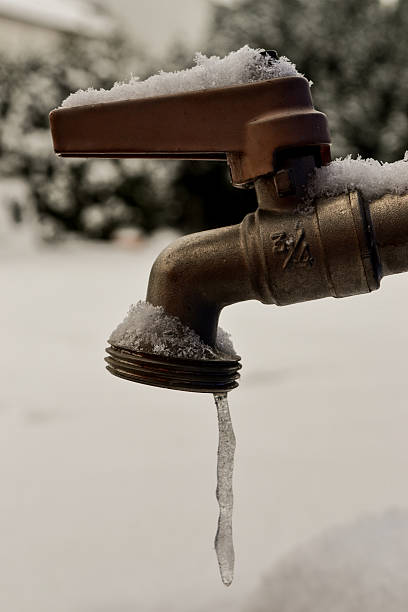Preventing Pipes from Cold Weather: Effective Strategies
Preventing Pipes from Cold Weather: Effective Strategies
Blog Article
We've come across the article about Helpful Tips to Prevent Frozen Pipes this Winter listed below on the web and reckoned it made perfect sense to discuss it with you here.

Winter can ruin your plumbing, particularly by freezing pipelines. Here's exactly how to prevent it from taking place and what to do if it does.
Introduction
As temperatures decrease, the risk of icy pipes boosts, potentially resulting in pricey fixings and water damages. Comprehending exactly how to stop icy pipes is important for homeowners in chilly environments.
Recognizing Frozen Pipelines
What triggers pipelines to freeze?
Pipelines freeze when revealed to temperature levels listed below 32 ° F (0 ° C) for prolonged durations. As water inside the pipes freezes, it increases, putting pressure on the pipeline walls and potentially triggering them to break.
Threats and damages
Frozen pipes can result in water disruptions, residential property damage, and pricey repair services. Ruptured pipelines can flood homes and trigger comprehensive structural damage.
Signs of Frozen Pipeline
Identifying frozen pipes early can prevent them from rupturing.
Exactly how to recognize icy pipelines
Seek decreased water circulation from taps, unusual smells or noises from pipes, and noticeable frost on exposed pipelines.
Prevention Tips
Insulating vulnerable pipelines
Wrap pipes in insulation sleeves or make use of warm tape to protect them from freezing temperature levels. Focus on pipelines in unheated or external locations of the home.
Heating strategies
Keep interior rooms appropriately heated, especially areas with pipes. Open cupboard doors to enable warm air to circulate around pipes under sinks.
Safeguarding Outdoor Pipes
Yard hoses and exterior taps
Detach and drain yard hoses prior to winter season. Mount frost-proof spigots or cover exterior taps with protected caps.
What to Do If Your Pipelines Freeze
Immediate activities to take
If you think icy pipelines, keep taps open to ease pressure as the ice thaws. Make use of a hairdryer or towels soaked in warm water to thaw pipelines slowly.
Long-Term Solutions
Architectural modifications
Think about rerouting pipelines away from outside walls or unheated locations. Add added insulation to attics, cellars, and crawl spaces.
Upgrading insulation
Purchase top quality insulation for pipes, attic rooms, and wall surfaces. Appropriate insulation helps maintain consistent temperatures and lowers the danger of icy pipes.
Conclusion
Stopping frozen pipes calls for aggressive steps and quick reactions. By understanding the causes, indicators, and safety nets, house owners can secure their pipes throughout cold weather.
5 Ways to Prevent Frozen Pipes
Drain Outdoor Faucets and Disconnect Hoses
First, close the shut-off valve that controls the flow of water in the pipe to your outdoor faucet. Then, head outside to disconnect and drain your hose and open the outdoor faucet to allow the water to completely drain out of the line. Turn off the faucet when done. Finally, head back to the shut-off valve and drain the remaining water inside the pipe into a bucket or container. Additionally, if you have a home irrigation system, you should consider hiring an expert to clear the system of water each year.
Insulate Pipes
One of the best and most cost-effective methods for preventing frozen water pipes is to wrap your pipes with insulation. This is especially important for areas in your home that aren’t exposed to heat, such as an attic. We suggest using foam sleeves, which can typically be found at your local hardware store.
Keep Heat Running at 65
Your pipes are located inside your walls, and the temperature there is much colder than the rest of the house. To prevent your pipes from freezing, The Insurance Information Institute suggests that you keep your home heated to at least 65 degrees, even when traveling. You may want to invest in smart devices that can keep an eye on the temperature in your home while you’re away.
Leave Water Dripping
Moving water — even a small trickle — can prevent ice from forming inside your pipes. When freezing temps are imminent, start a drip of water from all faucets that serve exposed pipes. Leaving a few faucets running will also help relieve pressure inside the pipes and help prevent a rupture if the water inside freezes.
Open Cupboard Doors
Warm your kitchen and bathroom pipes by opening cupboards and vanities. You should also leave your interior doors ajar to help warm air circulate evenly throughout your home.

Hopefully you enjoyed reading our piece about Prevent Frozen Pipes . Thanks for taking the time to read through our post. Are you aware of another individual who is interested by the topic? Do not hesitate to promote it. Thanks for your time spent reading it.
Click Here Report this page